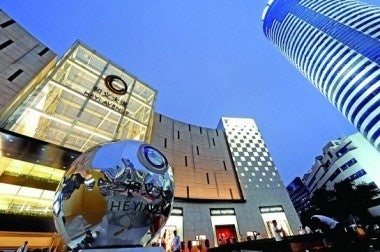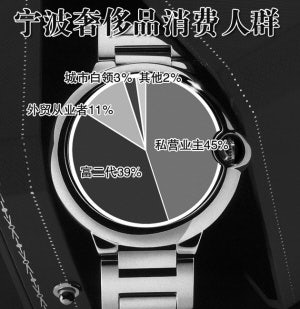Luxury Shoppers In Eastern Chinese City Younger Than National Average#

He Yi Avenue Shopping Center
Jing Daily’s Second-Tier Spotlight” series looks at some of the key trends shaping China’s provincial capitals, often referred to as the country’s “second-tier” cities. Previously in the series, we’ve highlighted Xi’an’s surprisingly young luxury consumers, a “Goldfinger”-worthy publicity stunt in Changsha, jade fever in Qingdao, Shenyang’s love for second-hand shops, Kunming’s quiet emergence as a luxury brand magnet, and Wuhan's burgeoning obsession with golf. Today, we turn to Ningbo, a seaport city in China's eastern Zhejiang province, which boasts significant consumer spending power despite being overshadowed by its larger counterparts.
Slipping mostly under the radar of international observers, the eastern city of Ningbo, Zhejiang province, has quietly become one of the China's most promising single luxury markets. A comparatively wealthy city, due to its coastal trade industry, Ningbo has a modest (for China) urban population of around 2.2 million, and a per capita GDP of around US$11,000, but a high concentration of entrepreneurs and "rich second generation" residents has seen consumer spending power increase dramatically over the past decade.
Since opening earlier this year, Ningbo's He Yi Avenue Shopping Mall has attracted hundreds of high-end brands to set up shop, with the mall racking up around 200 million yuan (US$31 million) in sales over the past six months. According to a report by Hexun, local industry insiders have estimated that total annual consumption of luxury goods in the city will reach 10 billion yuan (US$1.6 billion) this year. Hexun found that the most popular brands at He Yi Avenue mall are currently Louis Vuitton, Gucci, Cartier and Montblanc, with one Louis Vuitton salesperson saying, "Most of our consumers come from Ningbo, but now, because of the high-speed train service, others now come from Taizhou (south of Ningbo -- JD) and [as far away as] Fujian province."
As Li Jin, general manager of He Yi Avenue, told Hexun, the appetite for luxury goods seen among local Ningbo shoppers has been greater than expected. Said Li, "In general, most high-end shopping malls [in China] take a year to see sales live up to their potential, but [we've] done well since our grand opening." Li added that sales have benefited from the comparatively high brand awareness of Ningbo consumers, noting, "Sales of most luxury brands have been very good. Almost every head of each brand's China operations has come to celebrate the brand's debut here. Sales for many of the luxury brands at He Yi have been ranked among the top 10 nationally."

"Rich second generation" shoppers account for 39 percent of Ningbo's luxury sales
According to Hexun, despite Ningbo's status as a second-tier city (or even a third-tier city, depending on one's standards), luxury spending power there is comparable to top-tier cities. Much like other emerging second-tier markets like Xi'an, one aspect that stands out among Ningbo's luxury consumers is their relatively young age. In 2009, according to Forbes China, 45 percent of Ningbo's luxury consumers were private businesspeople and entrepreneurs, while a whopping 39 percent were young members of the "rich second generation" (富二代), 11 percent were traders, three percent were urban white-collar workers, and the remaining two percent were in miscellaneous industries.
The key thing to watch in Ningbo's luxury market is the continued spending of this "rich second generation." As the Hurun Report's "Young and Rich" survey found this May, not only is the rich second generation is more global in outlook and attitude than their parents, they’re also much more fashionable and more aware of luxury brands due to a wider range of information channels. According to the findings of the "Young and Rich" survey, the living standard of the rich second generation is significantly higher than ordinary white-collar workers in China, with nearly 20 percent of them spending 20,000 yuan (US$3,074) per month.